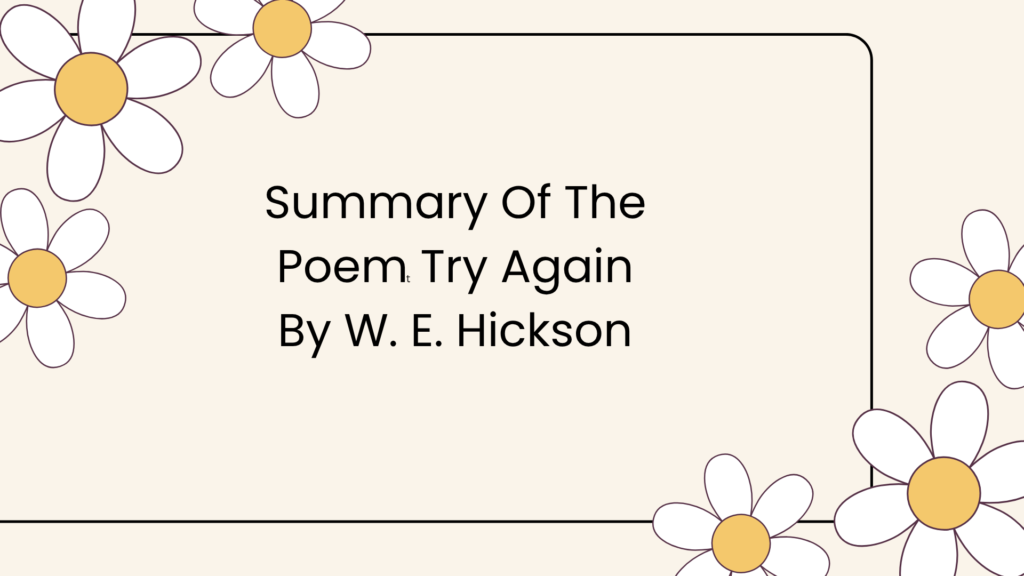
Summary Of Try Again
“Our greatest glory is not in never falling, but in rising every time we fall.” — Confucius.
This important message reflects the spirit of “Try Again,” a motivational poem by William Edward Hickson, a British writer and educator from the 19th century. Hickson believed in teaching morals through education and wrote this poem to encourage perseverance, especially in young people. His famous line, “If at first you don’t succeed, try, try again,” serves as a source of hope and determination, and it’s now a well-known saying in English-speaking cultures.
The poem carries a strong inspirational tone. It encourages readers, particularly students, to never give up despite repeated failures. Using simple language and rhythmic structure, Hickson repeatedly urges the reader to “try again.” Like the proverb “Practice makes perfect,” the poem teaches that every attempt, no matter how small or unsuccessful, is a valuable step toward success. He advises readers not to be disheartened by obstacles but to keep trying until they succeed. The surface message is clear: keep striving and never quit.
Watch this excellent video on the Summary Of Try Again!
Digging deeper, the hidden meaning is even more powerful. The poem “Try Again” is not just about external achievements—it’s about building inner resilience. In a society that often equates success with immediate results, Hickson promotes the virtue of patience and emotional strength. He shows that each failure contains a lesson and each setback is a setup for a comeback. As Nelson Mandela said, “I never lose. I either win or learn.”
Similarly, Hickson tells us that it is better to fail with courage than to never attempt at all.
The poet also implies that effort matters more than talent alone. The line “’Tis a lesson you should heed” acts as a gentle reminder that even the most successful people once failed. He highlights that repeated effort shapes one’s character. Like the idiom “Rome wasn’t built in a day,” success is a gradual process.
The moral lesson of the poem is timeless and universal: Perseverance conquers all. It doesn’t matter how many times we fall, but how many times we rise. Hickson shows that persistence is the most important ingredient in the recipe for success. As Thomas Edison famously said, “I have not failed. I’ve just found 10,000 ways that won’t work.” The poet urges students not to give in to failure, but to learn from it and try again with renewed spirit.
In conclusion, Try Again is a motivational anthem that teaches endurance, courage, and self-belief. It empowers the young to look beyond failure and believe in the power of trying. For students facing tough exams or challenges in life, this poem is a gentle hand on the shoulder, saying: “You can do it—just try again.” It teaches us that success is not a destination, but a journey built on perseverance.
The wise saying “Where there’s a will, there’s a way” captures the heart of this poem. With effort, patience, and hope, nothing is impossible.
So, whether in studies or in life, the best advice remains as Hickson wrote it:
“If at first you don’t succeed, try, try again.”
Visit more blogs like the Summary Of Try Again using this BUTTON